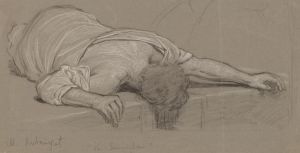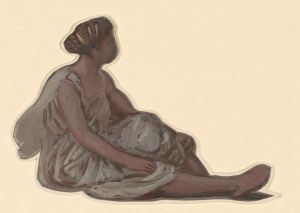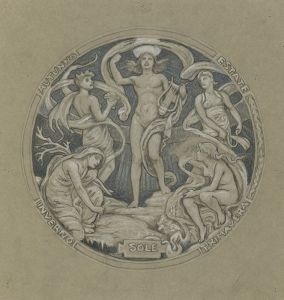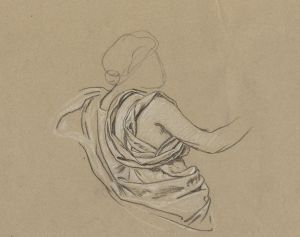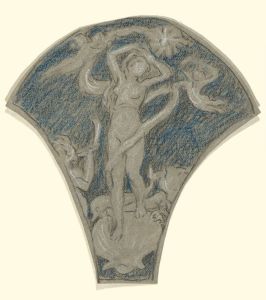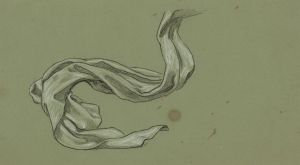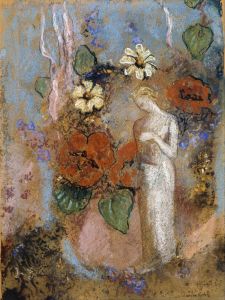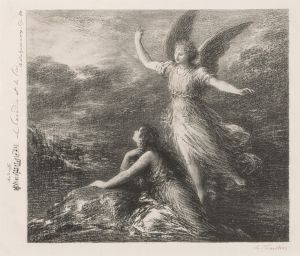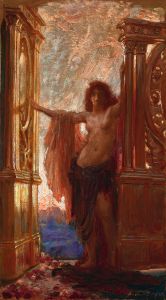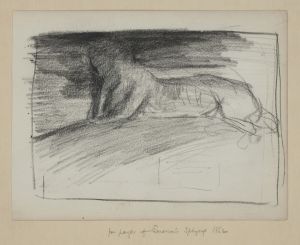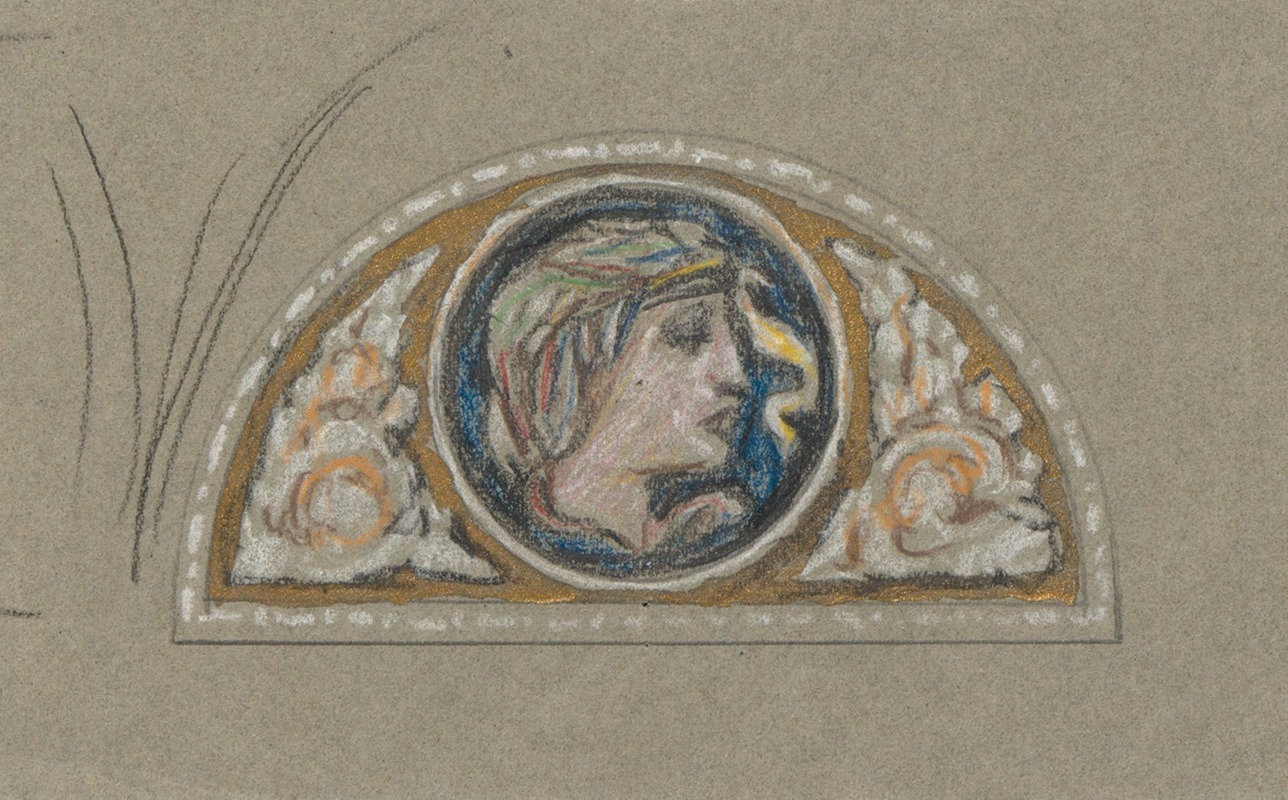
Study for Lunette with Female Head
A hand-painted replica of Elihu Vedder’s masterpiece Study for Lunette with Female Head, meticulously crafted by professional artists to capture the true essence of the original. Each piece is created with museum-quality canvas and rare mineral pigments, carefully painted by experienced artists with delicate brushstrokes and rich, layered colors to perfectly recreate the texture of the original artwork. Unlike machine-printed reproductions, this hand-painted version brings the painting to life, infused with the artist’s emotions and skill in every stroke. Whether for personal collection or home decoration, it instantly elevates the artistic atmosphere of any space.
Elihu Vedder, an American symbolist painter, created the artwork known as "Study for Lunette with Female Head." Vedder was born on February 26, 1836, in New York City and became renowned for his imaginative and mystical style, which often incorporated allegorical themes. His work was part of the broader symbolist movement that sought to express ideas and emotions through symbolic imagery and themes, often drawing on mythology and literature.
The "Study for Lunette with Female Head" is a preparatory work, which means it was likely created as a preliminary design for a larger, more finished piece. Lunettes are typically semi-circular or crescent-shaped spaces, often found in architecture above doors or windows, and are frequently used for decorative purposes. In this context, Vedder's study would have been intended to explore the composition, form, and details of a female figure that might be included in such a space.
Vedder's work is characterized by his meticulous attention to detail and his ability to convey complex themes through his art. His studies often reveal his process of refining ideas and experimenting with different elements before committing to a final composition. The "Study for Lunette with Female Head" would have been part of this creative process, allowing Vedder to explore the portrayal of the female form and the symbolic significance he wished to convey.
Throughout his career, Vedder was influenced by his extensive travels, particularly in Italy, where he spent a significant portion of his life. The classical art and architecture he encountered there had a profound impact on his work, and this influence is often evident in his use of mythological and allegorical subjects. His studies and finished works frequently reflect a blend of classical and contemporary themes, rendered in a style that is both detailed and expressive.
Vedder's contribution to the arts extends beyond painting; he was also a skilled illustrator and is perhaps best known for his illustrations of Edward FitzGerald's translation of "The Rubaiyat of Omar Khayyam," published in 1884. These illustrations are celebrated for their intricate detail and the way they complement the mystical and philosophical nature of the text.
While specific details about the "Study for Lunette with Female Head" are limited, it is representative of Vedder's broader artistic approach and his interest in exploring the human form and its symbolic potential. His studies, including this one, provide insight into his artistic process and the development of his ideas, showcasing his skill in capturing both physical beauty and deeper, often enigmatic, themes.
Elihu Vedder passed away on January 29, 1923, in Rome, Italy, leaving behind a legacy of work that continues to be studied and appreciated for its unique blend of symbolism, technical skill, and imaginative vision. His studies and finished pieces remain important contributions to the symbolist movement and to American art history.






